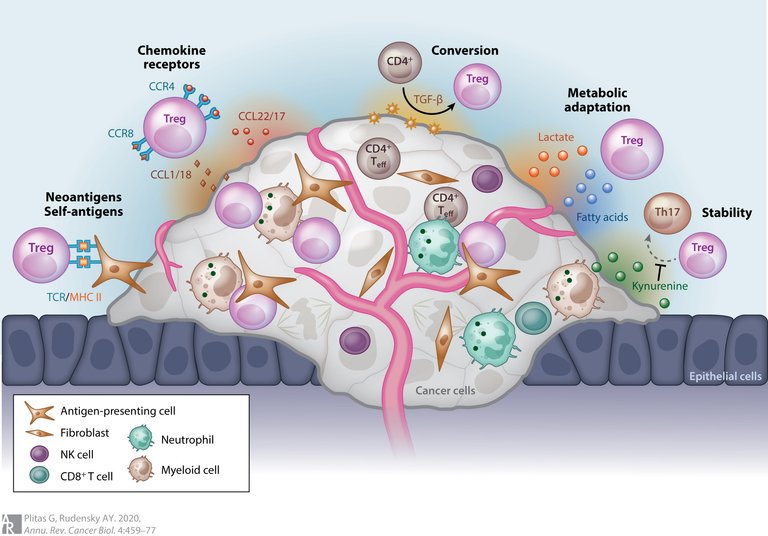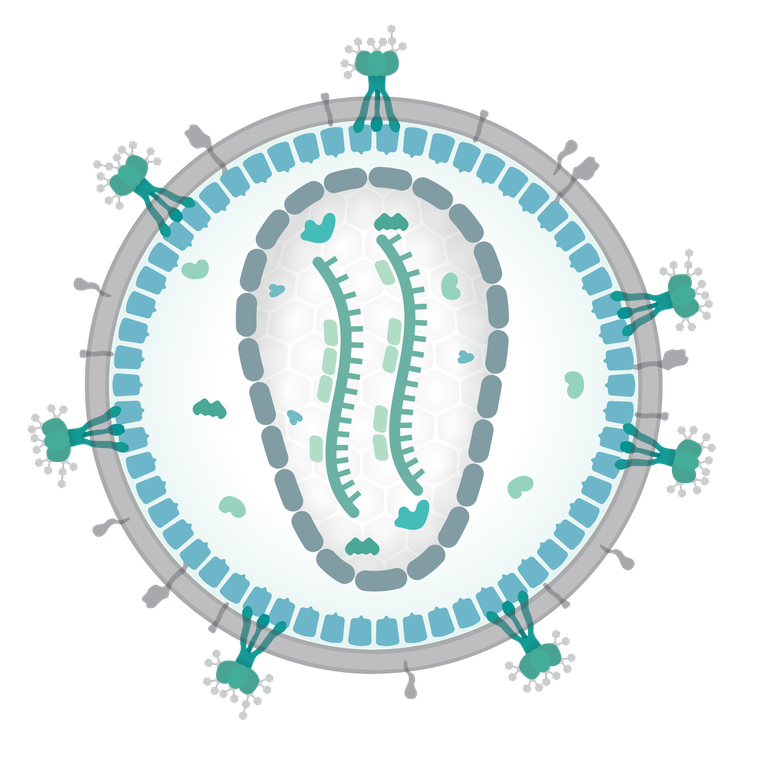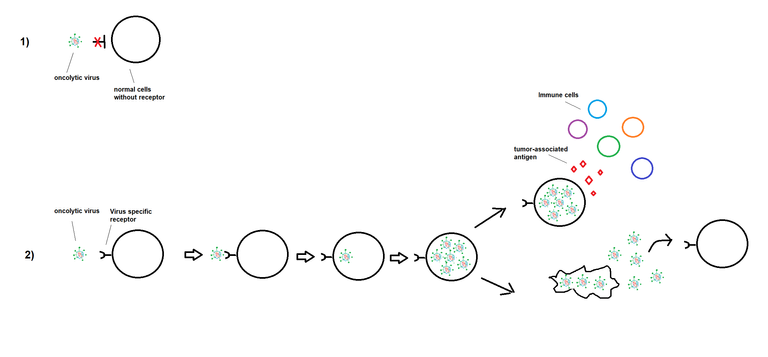Oncolytic Viruses: A New Strategy to Kill Cancer Cells
Hello Everyone,
Viruses have been used as a carrier for delivering several drug molecules in different therapeutic methods, but what would you say for a carrier (virus) that can deliver a drug or molecule and also has oncolytic properties.
A virus that specifically targets a cancer cell and, after multiplying its genome, gets out of the cell by lysing the cell. A virus generally infects a cell and undergoes a lytic or lysogenic phase. These viral particles lead to the cancer cell's lysis, hence called oncolytic viruses. These viruses have gained much attention in the scientific community because of their capability to infect the tumor microenvironment. A tumor micro-environment (TME) is generally a mass of cells and is very difficult to penetrate, but surprisingly these viruses are capable of entering inside the TME and neutralizing the cancer cells.

The theory of utilizing viruses for combating cancer is way too old. These different strategies utilize viral particles to neutralize cancer cells through immunization or virotherapy. However, after so many trials none of them succeeded until recently when the researchers discovered oncolytic viruses. There are some cancers where presence of viruses has been occurred for example: hepatitis B virus (HBV) in liver, human papilloma virus (HPV) in cervical cancer. A modern of combating these cancers called immunotherapy has shown ability to prevent the tumor formation by these viruses and inhibiting cancer. These oncolytic viruses adapt some promising approach to target these cancer cells:
- A cancerous cell has the lost the ability towards a viral attack and hence makes it more susceptible to infection.
- These viruses are further engineered to make them more potent and specific towards attacking cancerous cells.
- Upon infection, the virus follows its own mode of attack by replicating its genome and killing the cell by bursting the host cell and hence are called lytic or oncolytic (for lysing cancerous cells).
Apart from their property to neutralize cancer cells, they can also stimulate the immune system that suggested their use for other cancer therapies. This new advancement can then activate the immune checkpoint inhibitors and lead to the recognition of tumors by T cells to attack and neutralize them. This new technique incorporate a tumor inhibiting gene inside the oncolytic virus as cargo and by infecting tumor cells with these oncolytic viruses can stimulate the immune system.

Recently, a study by Kristin et al. showed that the immune checkpoint inhibitors only get functional with the “hot” tumor population, which are already infiltrated by T cells. The reason for calling it a “hot tumor” is because upon infection with the oncolytic viruses these senescent tumors (cold tumor) or tumor without T cell get infiltrated with T cells and hence are called hot tumors. According to the researcher, the oncolytic viruses cannot reach to every single cancerous cell in many patients and hence require a modern strategy to achieve it. There have been so many attempts by researchers to achieve this goal of destroying all the cancerous population by these oncolytic viruses. To check the effectiveness of the speculated model, they used an oncolytic virus called vaccinia for a tumor cell line which was very sensitive to these viruses and another tumor cell line, which are resistant to these viruses. Upon administrating both type of cancer to the mice, it was observed that the resistant to the vaccinia was mostly driver by the high level of signaling protein (TGF-β). The high level of TGF-β production shows the proliferation of the cancerous cells by suppressing the tumor environment.
To overcome this challenge any TGF-β inhibitor can be used to decrease their production and effectiveness. But TGF-β inhibitors are usually toxic in nature so a delivery vehicle is required to achieve this target of delivering the inhibitor on to the target site. The important thing about these oncolytic viruses are they target tumor cells specifically and helps in delivering the cargo (inhibitor) to the site. The new formulation of modified vaccinia containing a TGF-β inhibitor cargo has shown more than 50% removal of the cancerous cells and the new formulation also haven’t shown any autoimmune or toxicity related side-effects.
The next objective was to try this strategy with the highly aggressive form of melanoma which are capable of resisting anti-PD1 immune checkpoints. The population which were not administered with any treatment or oncolytic viruses died within 24 hours while about 20% of the population showed complete clearance containing the modified oncolytic virus. Interestingly, upon modifying the virus with anti-PD1 almost 67% of population got cleared of cancer cells and the survival rate increases. This new technique posses the potential to boost the immunotherapy in cancer patients.

Clinical scope of oncolytic viruses as novel immunotherapy for cancer
This new method of utilizing drug loaded oncovirus proposes a modern immunotherapy that can weakens the defense mechanism of cancer cells and make them more susceptible to viral infection. Therefore, an oncolytic virus can deliver a payload that triggers oncolysis and the release of intracellular antigens while only selectively infecting malignant cells through a genetic alteration phase. These antigens can then trigger an innate immune response that destroys any malignant cells that may still be present. Because of their highly specialized manner of action, oncoviruses seldom cause toxicities since they have little impact on healthy cells, however occasionally they can cause the immune system to attack healthy cells.
Despite being so much potent and effective for cancer cells the technology still has advanced enough and still needs more work to gain the maximum percentage neutralization. The cancer also has a property of reemergence and with this advanced immunotherapy, a solution for the reemergence should also be a point of consideration.

FDA approved Oncolytic therapy treatment
Till date, there is only one oncolytic virus approved by Food and Drug Administration (FDA) for treating a cancer infection.
As always, these viral infection can give you some allergic response or some mild side effects including fever, fatigue or nausea. There are still many under clinical trials, waiting to be approved.
References
Turkington et. al., 1965 Oncolytic viruses - Wikipedia.
Sophia et. al., 2023 Therapy with oncolytic viruses: progress and challenges.
A Promising Future For Oncolytic Viruses As Cancer Immunotherapies.
Hope you find it interesting, see you soon with some other interesting topic.




Thanks for your contribution to the STEMsocial community. Feel free to join us on discord to get to know the rest of us!
Please consider delegating to the @stemsocial account (85% of the curation rewards are returned).
You may also include @stemsocial as a beneficiary of the rewards of this post to get a stronger support.